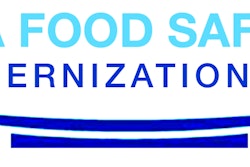
The Food Safety Modernization Act (FSMA) S. 510 was signed into law in 2011. The law significantly expands the powers of the Food and Drug Administration (FDA) with respect to foods it generally oversees and its main goal is to focus the department on food contamination prevention. The bill is considered to be the first major federal legislation on food safety since 1938 when the Federal Food, Drug and Cosmetic Act was passed giving the FDA authority to oversee the safety of food, drugs and cosmetics.
Since then the FDA has had only a limited role in controlling food safety as the industry regulated itself. With the passage of time however U.S. food production has become more centralized and the importation of foods has risen significantly. The FDA reports that nearly two thirds of the fruits and vegetables in the U.S. are imported and estimations are that between 2007 and 2015 FDA regulated imported foods will triple. This globalization of food sources coupled with numerous foodborne related outbreaks over the last several years has spurred the urgency that lead to the passing of the FSMA. Growers and processors alike will be affected. This paper examines the changes that will be implemented and how those changes will impact the farmers, growers, processors and retailers that provide us our food.
The bill, which remained on the shelf for a year and a half, was finally pushed through the Senate in part due to increased media attention on recalls and several disturbing foodborne illness outbreaks in the past few years. Cookie dough, leafy greens, beef and peanut butter have all been cited as sources of contamination from 2009 to 2011 alone. Additionally, according to the Center for Disease Control and Prevention (CDC) one in six Americans get sick each year from foodborne diseases.
The legislation attempts to strengthen the FDA’s ability to prevent and detect disease rather than simply reacting to outbreaks. S. 510 has four key components; testing for dangerous pathogens, tracing outbreaks back to the source, providing the FDA with mandatory recall authority and requiring imported foods to comply with the same standards that U.S. based foods are required to comply with. Further compartmentalized these components are detection and response, prevention measures, imported food rulings and inspection measures (including track and trace capabilities). Growers, processors, distributors and transporters of food will be affected at varying levels in each of these component sections.
Detection And Response
Prior to the passage of this bill the FDA had the capability to detain food for 20 to 30 days to pursue a court action. However their authority was extremely limited and required the agency to possess evidence that the food presented a threat. As a result the department rarely actually detained food leaving the food manufacturers to voluntarily recall suspected dangerous products on their own. Other factors that may have limited the agency’s effectiveness in enforcing food detention include the complexities of obtaining evidence, the lack of enforcement personnel and a concentration on higher priority issues.
With the passage of the FSMA the FDA has been given the authority to directly issue a food recall without the requirement for hard evidence of contamination. The FDA is now empowered to seize food that they have any reason to believe is contaminated, adulterated or misbranded. This change was designed to focus the FDA on prevention moving the department away from its current reactive role.
Should the FDA issue a food recall the department also has power to suspend any food facility’s production should they deem that there is an associated health risk. Any facility that is suspended cannot distribute food and the FDA may impose suspension or recall fees on the company. All food manufacturers previously were only required to register once however with the implementation of the new bill facilities must renew registration between October and December of each even number year.
The bill has other agencies working on preparation for outbreaks. The Health and Human Services (HHS) and the Department of Homeland Security (DHS) have been mandated to prepare specific response and recovery outlines in the event of a foodborne illness outbreak. Additionally, grocery stores will be responsible for keeping customers abreast of all the latest recalls.
Focus On Prevention
The new bill’s emphasis on prevention includes the identification of new preventative outlines created by the FDA and the implementation of hazard analysis by each food facility. Also, specific nationwide standards for produce may be set by the FDA. New screening, packaging and monitoring tools will be extremely valuable to food facilities in implementing these company preventative control plans.
The new bill requires that the FDA identify the most significant food threats and provide an outline or regulation for food production facilities using new science- based methods. The current FDA Title 21 part 110’s good manufacturing practice regulation is the guideline that companies must follow. It sets forth the guidelines that food manufacturers and processors must follow in the processing, producing and handling of food and it covers multiple areas from warehousing and distribution to personnel. Going forward the FDA will be required to identify the most significant food threats and publish new outlines for food production handlers every two years.
Each food production facility will be required to inform the FDA of its food safety prevention plans. The company’s written plan will be required to include all the company’s prevention controls such as controls at critical control points and verification, monitoring, corrective action and recordkeeping methodologies. This hazard analysis requirement will ensure that food is not contaminated and further ensure that food is not misbranded for allergen control. Additionally, the law gives the FDA the power to set nationwide standards for produce production and harvesting.
New technologies and tools applicable to these preventive regulations include screening for bacteria, improving packaging, and monitoring and maintaining the cold chain from harvest to delivery.
















